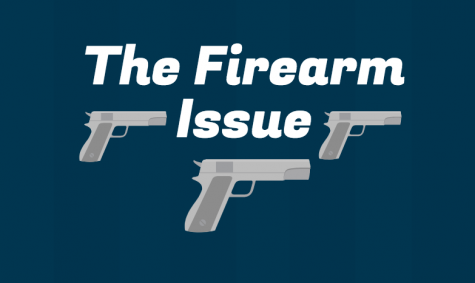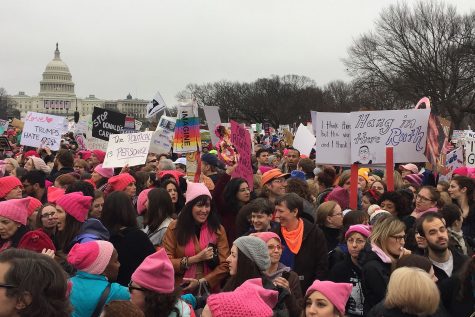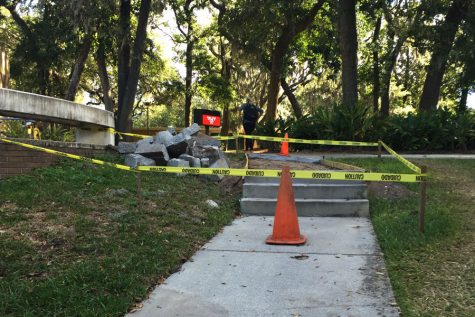Freddie Gray Trials Continue
A man’s death in April 2015 sparked the nationwide debate over police brutality and rioting in April that damaged 380 businesses across the city of Baltimore.
On April 12, 2015, Freddie Carlos Gray, Jr., a 25-year-old African-American man, was arrested by the Baltimore Police Department for possessing, what the police alleged, was an illegal switchblade.
While being transported to prison in a police van, Gray fell into a coma and was taken to a trauma center.
Gray died on April 19, 2015; his death was due to injuries to his spinal cord. Six officers involved with the arrest were indicted, their charges ranged from second-degree depraved-heart murder to misconduct in office. It has been alleged that their misconduct during Gray’s arrest and transport resulted in his death.
“I heard that the police officers didn’t strap him into the car, so he was going everywhere and broke a lot of bones, so I guess people suspect there was foul play,” senior Wilfred Ikejiofor said.
Multiple reports have surfaced that further complicate the mystery of Gray’s death. Investigators found that Gray was mortally injured in the van and not during his arrest, WJLA, a Washington DC television station reported, citing multiple law enforcement sources.
It was later learned that the van made a second, subsequent stop to pick up another prisoner after apprehending Gray. This prisoner told investigators that he thought Gray “was intentionally trying to injure himself,” according to The Washington Post.
“All the evidence I’ve heard definitely points to the police officers being guilty of hurting [Gray], so I do think that they are guilty,” senior Matt Walker said.
Some students seem to have a clear idea of what happened, but this is not true for everyone. “I don’t really know what happened during Freddie Gray’s arrest,” junior Chris Tassanari said.
According to the Huffington Post, “Many questions and inconsistencies have left the public wondering what really happened to Freddie Gray.” This statement seems to be reflected by the student body.
“The facts seem to be changing, so I don’t really know enough about it. I can’t speculate if I wasn’t there and can’t be sure about what really happened,” senior Kate Runser said.
So far, one out of the six trials has taken place. On Dec. 16, Officer William Porter, the driver of the police van, stood trial. According to a survey conducted by The Patriot, 82.86 percent of JC students were aware that Porter was charged with involuntary manslaughter, second-degree assault, reckless endangerment, and misconduct in office.
A mistrial was declared on all charges, after a hung jury could not come to a decision.
“The trial process is completely complex, with Officer Porter’s trial being a mistrial I feel like it is going to back everything up because I think that the prosecution is looking at his testimony to make a case for the others. Now the prosecution really has to rethink their attack on this thing,” religion teacher Thomas Vierheller said.
Porter’s second trial is scheduled for June 13, 2016.
“Officer Porter, in his statements, very clearly shifts blame to Officer Goodson, another police officer whose trial begins Jan. 6. Prosecutors very much want to use Officer Porter in the case against Goodson,” former city prosecutor Warren S. Alperstein said in an interview with The Baltimore Sun.
Although Porter gets the chance at a second trial, students are still concerned about the fairness of the trial.
“The jury, I believe, is all Baltimore residents so there might be a lot of bias going on there. Also, I feel like for people in the city there’s too much emotion right now to be able to assess the issue,” sophomore Drew Forthman said.
According to The Wall Street Journal, lawyers for all six officers have tried to get the trials moved out of Baltimore, claiming their clients can’t receive a fair trial in the city. The judge of the six trials, Judge Barry G. Williams, has denied their requests, saying jury selection is the time to test whether open-minded jurors can be found.
Protesters with the People’s Power Assembly protested outside the courtroom, demanding that the trials not be moved. Many believe that moving the trial out of Baltimore will not result in a more fair trial, but will result if the officers being tried by a jury from different socioeconomic classes, therefore jurors who are not Gray’s peers.
According to The Baltimore Sun, “the protests were largely peaceful during last week’s pretrial motions hearing — with two arrests.”
“I haven’t seen many effects of the recent protesting because I think we’re somewhat buffered because of geography, and I also think the demographics of Harford County change that, but it should affect us because at least what I want is justice, and I just want to find out what the truth of the situation was. That’s what justice is,” Vierheller said.
Lilly Stannard is an In-Focus Editor for The Patriot and jcpatriot.com.












